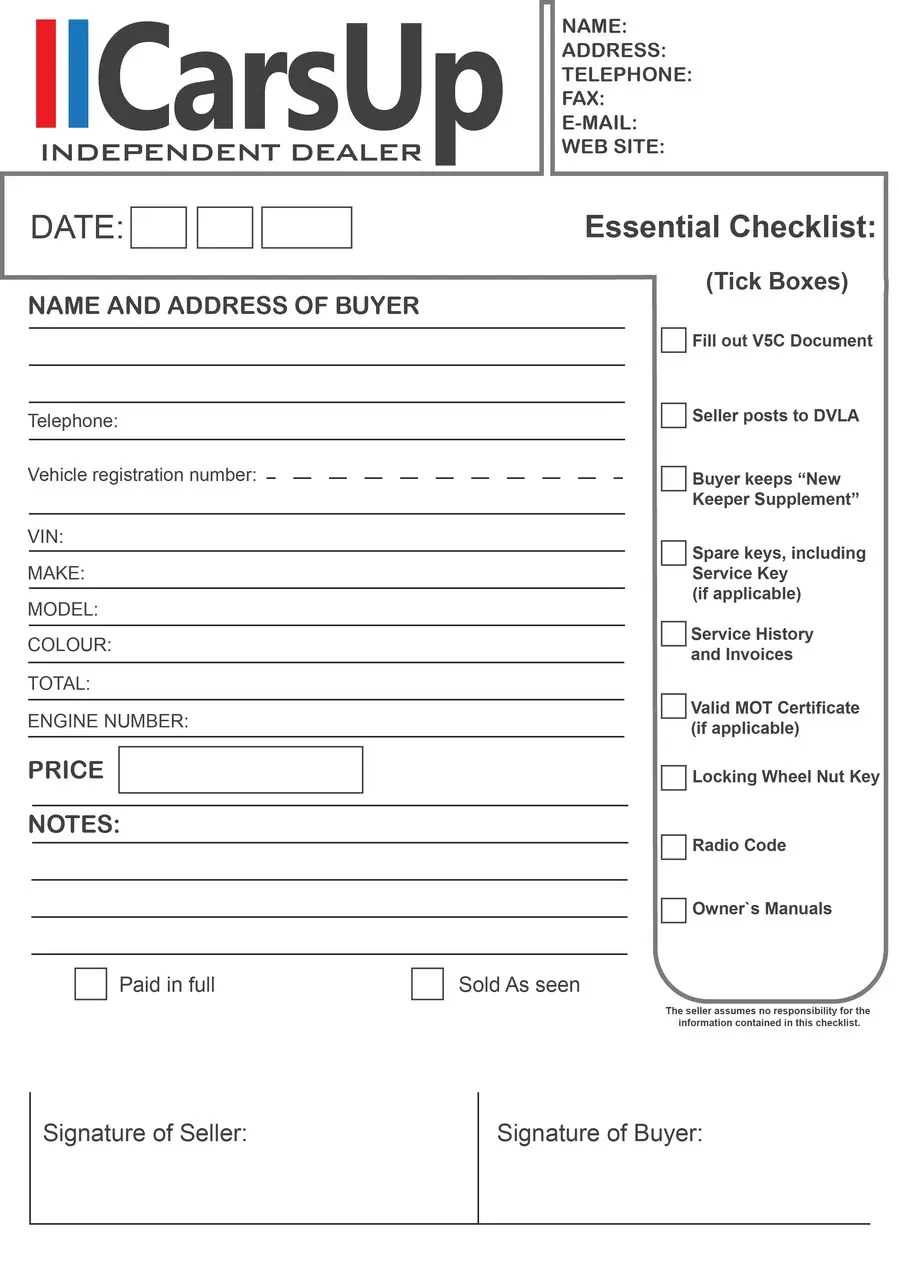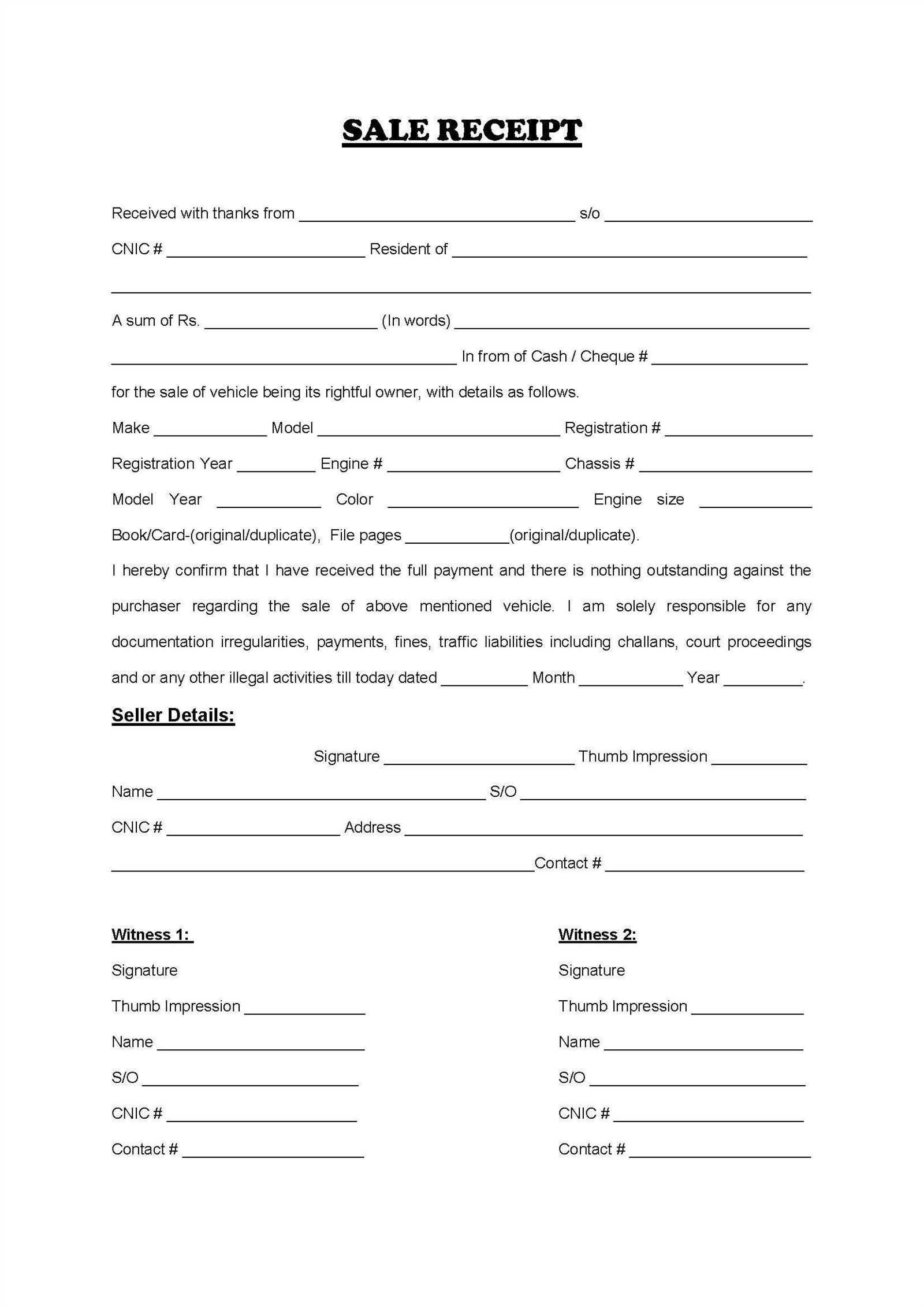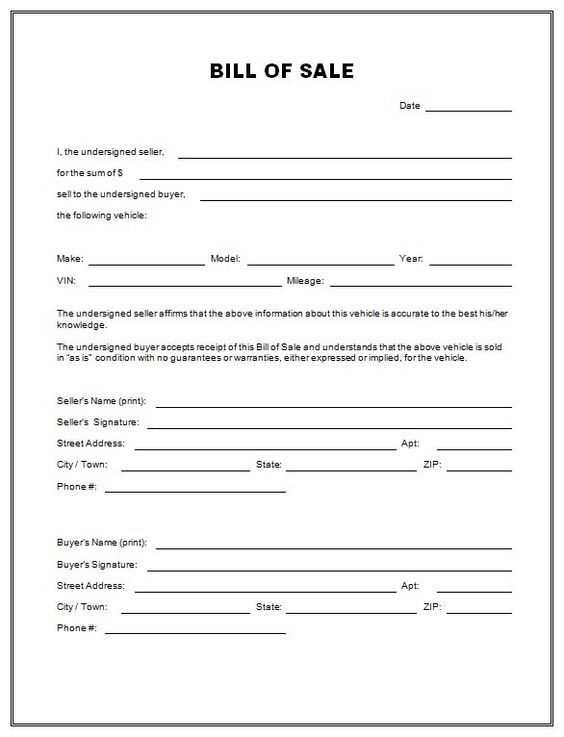
Creating a receipt template for a car sale ensures both parties have a clear and legally sound record of the transaction. It provides necessary details, such as the vehicle’s make, model, VIN, sale price, and date of transfer, helping to avoid disputes later on.
A receipt should list the full names and contact information of the buyer and seller, along with the terms agreed upon. This includes any warranties or as-is clauses if applicable. Be specific about the payment method, whether it was a bank transfer, check, or cash. Also, include the car’s odometer reading at the time of sale to avoid confusion regarding mileage claims.
Ensure both parties sign the receipt and keep a copy for their records. This simple yet significant step helps secure the legitimacy of the transaction, reducing potential legal issues in the future.
How to Structure a Car Sale Receipt for Legal Validity
To ensure a car sale receipt holds legal validity, clearly outline the transaction details and adhere to local regulations. Start with basic information about the buyer and seller. Include their full names, addresses, and contact information. This will establish the parties involved in the transaction.
Transaction Details

List the car’s make, model, year, VIN (Vehicle Identification Number), and odometer reading. These details prevent ambiguity and confirm the exact vehicle being sold. Also, state the total sale price, specifying any deposit or down payment received at the time of the transaction.
Signatures and Dates

Both the buyer and seller must sign the receipt, confirming their agreement to the terms of sale. Include the date of the transaction, as it establishes the point of legal transfer. The signatures should be handwritten or, if applicable, digitally authenticated, based on jurisdictional requirements.
Finally, retain a copy of the receipt for both parties. A well-structured receipt not only protects your rights but also prevents future disputes related to the transaction.
Key Sections to Include in a Car Sale Receipt Template

Include the buyer’s and seller’s full names, addresses, and contact details. This helps clearly identify both parties involved in the transaction. Make sure to list the vehicle’s make, model, year, VIN (Vehicle Identification Number), and current mileage. These details confirm the specific car being sold.
Clearly state the sale price of the car and specify the payment method (cash, check, bank transfer). If any deposit or down payment is involved, note that as well. Include a section for the date of the sale and the date the car was transferred to the new owner.
Outline any warranties or “as-is” statements regarding the car’s condition. If there are no warranties, indicate that the car is sold without one. This will prevent future disputes over the car’s state post-sale.
If applicable, include a statement that confirms the seller has the legal right to sell the vehicle and that there are no outstanding liens on it. Adding a clause for any additional terms or agreements made between the parties is also recommended.
Conclude with spaces for both parties to sign and date, ensuring both the seller and buyer acknowledge the terms. This legally binds the agreement and finalizes the transaction.
How to Customize a Car Sale Receipt for Different Types of Transactions

For a smooth car sale process, customize your receipt to reflect the specifics of the transaction. Adjust the receipt based on whether it’s a private sale, dealership sale, or trade-in deal. This ensures both parties have a clear record of the exchange and that the transaction is documented accurately.
Private Sale
In a private sale, the receipt should list both the buyer and seller’s details, including full names, addresses, and contact information. Clearly state the make, model, year, VIN, and mileage of the car. Include the agreed sale price and payment method, whether it’s cash, check, or a bank transfer. Add a section where the buyer acknowledges the car is sold “as-is” unless warranties are offered. Signatures from both parties are necessary for validation.
Dealership Sale
For dealership transactions, include the dealership’s business name, address, and contact details at the top. Itemize the car’s price, taxes, dealer fees, and any financing terms if applicable. Specify the trade-in value if the buyer is trading in a vehicle. If a warranty or service package is included, note this clearly on the receipt. Payment methods should also be outlined, along with any down payment and the balance due. Ensure the document also indicates whether the sale is final or contingent on financing approval.
By adjusting these details, you ensure that your car sale receipt suits the specifics of the transaction and provides all necessary information for both parties.


